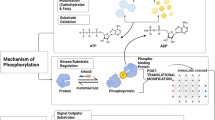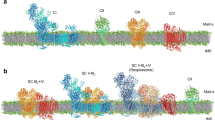Abstract
Caffeine increases mitochondrial biogenesis in myotubes by evoking Ca2+ transients. Nitric oxide (NO) also induces mitochondrial biogenesis in skeletal muscle cells via upregulation of AMP-activated protein kinase (AMPK) activity and PGC-1α. However, the interplay and timing sequence between Ca2+ transients and NO releases remain unclear. Herein, we tested the hypothesis that caffeine-evoked Ca2+ transients triggered NO production to increase mtDNA in skeletal muscle cells. Ca2+ transients were recorded with Fura-2 AM and confocal microscopy; mtDNA staining, mitochondrial membrane potential and NO level were determined using fluorescent probes PicoGreen, tetramethylrhodamine methyl ester (TMRM) and DAF-FM, respectively. In primary cultured myotubes, a subtle and moderate stress of caffeine increased mtDNA exclusively. Mitochondrial membrane potential and mtDNA were increased by 1 mM as well as 5 mM caffeine, whereas 10 mM caffeine did not change the fluorescence intensity of PicoGreen and TMRM. NO level in myocytes increased gradually following the first jump of Ca2+ transients evoked by caffeine (5 mM) till the end of recording, when Fura-2 indicated that Ca2+ transients recovered partly and even disappeared. Importantly, nitric oxide synthase (NOS) inhibitor (l-NAME) suppressed caffeine-induced mtDNA biogenesis, whereas NO donor (DETA-NO) increased mtDNA content. These data strongly suggest that caffeine-induced mtDNA biogenesis is dose-sensitive and dependent on a certain level of stress. Further, an increasing level of NO following Ca2+ transients is required for caffeine-induced mtDNA biogenesis. Additionally, Ca2+ transients, a usual and first response to caffeine, was either suppressed or attenuated by l-NAME, DETA-NO, AICAR and U0126, suggesting an inability to control [Ca2+]i in these treated cells. There may be an important interplay between NO and Ca2+ transients in intracellular signaling system involving NOS, AMPK and MEK.





Similar content being viewed by others
References
Akimoto T, Pohnert SC, Li P, Zhang M, Gumbs C, Rosenberg PB et al (2005) Exercise stimulates Pgc-1alpha transcription in skeletal muscle through activation of the p38 MAPK pathway. J Biol Chem 280(20):19587–19593
Ashley N, Harris D, Poulton J (2005) Detection of mitochondrial DNA depletion in living human cells using PicoGreen staining. Exp Cell Res 303(2):432–446
Biswas G, Adebanjo OA, Freedman BD, Anandatheertha varada HK, Vijayasarathy C, Zaidi M et al (1999) Retrograde Ca2+ signaling in C2C12 skeletal myocytes in response to mitochondrial genetic and metabolic stress: a novel mode of inter-organelle crosstalk. EMBO J 18(3):522–533
Boulware MJ, Marchant JS (2008) Timing in cellular Ca2+ signaling. Curr Biol 18(17):R769–R776
Brookes PS, Yoon Y, Robotham JL, Anders MW, Sheu SS (2004) Calcium, ATP, and ROS: a mitochondrial love-hate triangle. Am J Physiol Cell Physiol 287(4):C817–C833
Cheng H, Lederer MR, Lederer WJ, Cannell MB (1996) Calcium sparks and [Ca2+]i waves in cardiac myocytes. Am J Physiol 270(1 Pt 1):C148–C159
Chin ER (2005) Role of Ca2+/calmodulin-dependent kinases in skeletal muscle plasticity. J Appl Physiol 99(2):414–423
Clementi E, Nisoli E (2005) Nitric oxide and mitochondrial biogenesis: a key to long-term regulation of cellular metabolism. Comp Biochem Physiol A Mol Integr Physiol 142(2):102–110
Cordeiro JM, Spitzer KW, Giles WR, Ershler PE, Cannell MB, Bridge JH (2001) Location of the initiation site of calcium transients and sparks in rabbit heart Purkinje cells. J Physiol 531(Pt 2):301–314
Delbono O, Renganathan M, Messi ML (1997) Excitation-Ca2+ release-contraction coupling in single aged human skeletal muscle fiber. Muscle Nerve Suppl 5:S88–S92
Fujii W, Takaki M, Yoshida A, Ishidate H, Ito H, Suga H (1998) Effects of intracoronary caffeine on left ventricular mechanoenergetics in Ca2+ overload failing rat hearts. Jpn J Physiol 48(5):373–381
Gee KR, Brown KA, Chen WN, Bishop-Stewart J, Gray D, Johnson I (2000) Chemical and physiological characterization of fluo-4 Ca(2+)-indicator dyes. Cell Calcium 27(2):97–106
Gissel H (2005) The role of Ca2+ in muscle cell damage. Ann N Y Acad Sci 1066:166–180
Gomez-Cabrera MC, Domenech E, Romagnoli M, Arduini A, Borras C, Pallardo FV et al (2008) Oral administration of vitamin C decreases muscle mitochondrial biogenesis and hampers training-induced adaptations in endurance performance. Am J Clin Nutr 87(1):142–149
Grapengiesser E, Gylfe E, Dansk H, Hellman B (2001) Nitric oxide induces synchronous Ca2+ transients in pancreatic beta cells lacking contact. Pancreas 23(4):387–392
Grosskreutz J, Van Den Bosch L, Keller BU (2010) Calcium dysregulation in amyotrophic lateral sclerosis. Cell Calcium 47(2):165–174
Isaeva EV, Shirokova N (2003) Metabolic regulation of Ca2+ release in permeabilized mammalian skeletal muscle fibres. J Physiol 547(Pt 2):453–462
Isaeva EV, Shkryl VM, Shirokova N (2005) Mitochondrial redox state and Ca2+ sparks in permeabilized mammalian skeletal muscle. J Physiol 565(Pt 3):855–872
Kurosaki T, Baba Y (2010) Ca2+ signaling and STIM1. Prog Biophys Mol Biol 103(1):51–58
Lamb GD, Cellini MA, Stephenson DG (2001) Different Ca2+ releasing action of caffeine and depolarisation in skeletal muscle fibres of the rat. J Physiol 531(Pt 3):715–728
Le Pennec S, Mirebeau-Prunier D, Boutet-Bouzamondo N, Jacques C, Guillotin D, Lauret E et al (2011) Nitric oxide and calcium participate in the fine regulation of mitochondrial biogenesis in follicular thyroid carcinoma cells. J Biol Chem 286(20):18229–18239
Leclerc C, Neant I, Webb SE, Miller AL, Moreau M (2006) Calcium transients and calcium signalling during early neurogenesis in the amphibian embryo Xenopus laevis. Biochim Biophys Acta 1763(11):1184–1191
Liberona JL, Cardenas JC, Reyes R, Hidalgo J, Molgo J, Jaimovich E (2008) Sodium-dependent action potentials induced by brevetoxin-3 trigger both IP3 increase and intracellular Ca2+ release in rat skeletal myotubes. Cell Calcium 44(3):289–297
Lira VA, Soltow QA, Long JH, Betters JL, Sellman JE, Criswell DS (2007) Nitric oxide increases GLUT4 expression and regulates AMPK signaling in skeletal muscle. Am J Physiol Endocrinol Metab 293(4):E1062–E1068
Lira VA, Brown DL, Lira AK, Kavazis AN, Soltow QA, Zeanah EH et al (2010) Nitric oxide and AMPK cooperatively regulate PGC-1 in skeletal muscle cells. J Physiol 588(Pt 18):3551–3566
Mao C, Kisaalita WS (2004) Determination of resting membrane potential of individual neuroblastoma cells (IMR-32) using a potentiometric dye (TMRM) and confocal microscopy. J Fluoresc 14(6):739–743
McConell GK, Wadley GD (2008) Potential role of nitric oxide in contraction-stimulated glucose uptake and mitochondrial biogenesis in skeletal muscle. Clin Exp Pharmacol Physiol 35(12):1488–1492
McConell GK, Ng GP, Phillips M, Ruan Z, Macaulay SL, Wadley GD (2010) Central role of nitric oxide synthase in AICAR and caffeine-induced mitochondrial biogenesis in L6 myocytes. J Appl Physiol 108(3):589–595
Morabito C, Rovetta F, Bizzarri M, Mazzoleni G, Fano G, Mariggio MA (2010) Modulation of redox status and calcium handling by extremely low frequency electromagnetic fields in C2C12 muscle cells: a real-time, single-cell approach. Free Radic Biol Med 48(4):579–589
Navratil M, Poe BG, Arriaga EA (2007) Quantitation of DNA copy number in individual mitochondrial particles by capillary electrophoresis. Anal Chem 79(20):7691–7699
Nisoli E, Carruba MO (2006) Nitric oxide and mitochondrial biogenesis. J Cell Sci 119(Pt 14):2855–2862
Ojuka EO (2004) Role of calcium and AMP kinase in the regulation of mitochondrial biogenesis and GLUT4 levels in muscle. Proc Nutr Soc 63(2):275–278
Ojuka EO, Jones TE, Han DH, Chen M, Wamhoff BR, Sturek M et al (2002) Intermittent increases in cytosolic Ca2+ stimulate mitochondrial biogenesis in muscle cells. Am J Physiol Endocrinol Metab 283(5):E1040–E1045
Ojuka EO, Jones TE, Han DH, Chen M, Holloszy JO (2003) Raising Ca2+ in L6 myotubes mimics effects of exercise on mitochondrial biogenesis in muscle. FASEB J 17(6):675–681
Piriz N, Brum G, Pizarro G (2006) Differential sensitivity to perchlorate and caffeine of tetracaine-resistant Ca2+ release in frog skeletal muscle. J Muscle Res Cell Motil 27(3–4):221–234
Posterino GS, Dunn SL (2008) Comparison of the effects of inorganic phosphate on caffeine-induced Ca2+ release in fast- and slow-twitch mammalian skeletal muscle. Am J Physiol Cell Physiol 294(1):C97–C105
Reyes R, Jaimovich E (1996) Functional muscarinic receptors in cultured skeletal muscle. Arch Biochem Biophys 331(1):41–47
Schoppe J, Hochstrate P, Schlue WR (1997) Caffeine mediates cation influx and intracellular Ca2+ release in leech P neurones. Cell Calcium 22(5):385–397
Shabala L, Sanchez-Pastor E, Trujillo X, Shabala S, Muniz J, Huerta M (2008) Effects of verapamil and gadolinium on caffeine-induced contractures and calcium fluxes in frog slow skeletal muscle fibers. J Membr Biol 221(1):7–13
Shkryl VM, Shirokova N (2006) Transfer and tunneling of Ca2+ from sarcoplasmic reticulum to mitochondria in skeletal muscle. J Biol Chem 281(3):1547–1554
Strobel NA, Peake JM, Matsumoto A, Marsh SA, Coombes JS, Wadley GD (2011) Antioxidant supplementation reduces skeletal muscle mitochondrial biogenesis. Med Sci Sports Exerc 43(6):1017–1024
Su JY (1992) Influence of caffeine, Ca2+, and Mg2+ on ryanodine depression of the tension transient in skinned myocardial fibers of the rabbit. Pflugers Arch 421(1):1–6
Su JY, Hasselbach W (1984) Caffeine-induced calcium release from isolated sarcoplasmic reticulum of rabbit skeletal muscle. Pflugers Arch 400(1):14–21
Takahashi S, Denvir MA, Harder L, Miller DJ, Cobbe SM, Kawakami M et al (1998) Effects of in vitro and in vivo exposure to doxorubicin (adriamycin) on caffeine-induced Ca2+ release from sarcoplasmic reticulum and contractile protein function in ‘chemically-skinned’ rabbit ventricular trabeculae. Jpn J Pharmacol 76(4):405–413
Tavi P, Westerblad H (2011) The role of in vivo Ca2+ signals acting on Ca2+-calmodulin-dependent proteins for skeletal muscle plasticity. J Physiol 589(Pt 21):5021–5031
Vergara JL, Difranco M (2006) Modulation by caffeine of calcium-release microdomains in frog skeletal muscle fibers. Biol Res 39(3):567–581
Wadley GD, McConell GK (2007) Effect of nitric oxide synthase inhibition on mitochondrial biogenesis in rat skeletal muscle. J Appl Physiol 102(1):314–320
Weisleder N, Ma J (2008) Altered Ca2+ sparks in aging skeletal and cardiac muscle. Ageing Res Rev 7(3):177–188
Wright DC, Geiger PC, Han DH, Jones TE, Holloszy JO (2007) Calcium induces increases in peroxisome proliferator-activated receptor gamma coactivator-1alpha and mitochondrial biogenesis by a pathway leading to p38 mitogen-activated protein kinase activation. J Biol Chem 282(26):18793–18799
Wu H, Kanatous SB, Thurmond FA, Gallardo T, Isotani E, Bassel-Duby R et al (2002) Regulation of mitochondrial biogenesis in skeletal muscle by CaMK. Science 296(5566):349–352
Ziolo MT, Maier LS, Piacentino VR, Bossuyt J, Houser SR, Bers DM (2004) Myocyte nitric oxide synthase 2 contributes to blunted beta-adrenergic response in failing human hearts by decreasing Ca2+ transients. Circulation 109(15):1886–1891
Acknowledgments
The authors would like to acknowledge the other colleagues in Department of Physiology, University College London for the technical support and reagents. This work was also supported by grants from the National Natural Science Foundation of China (Grant No. 30871212 & 31171142).
Author information
Authors and Affiliations
Corresponding author
Additional information
Shuzhe Ding and Zhengtang Qi contributed equally to this study.
Rights and permissions
About this article
Cite this article
Ding, S., Contrevas, J.R., Abramov, A.Y. et al. Mild stress of caffeine increased mtDNA content in skeletal muscle cells: the interplay between Ca2+ transients and nitric oxide. J Muscle Res Cell Motil 33, 327–337 (2012). https://doi.org/10.1007/s10974-012-9318-5
Received:
Accepted:
Published:
Issue Date:
DOI: https://doi.org/10.1007/s10974-012-9318-5




